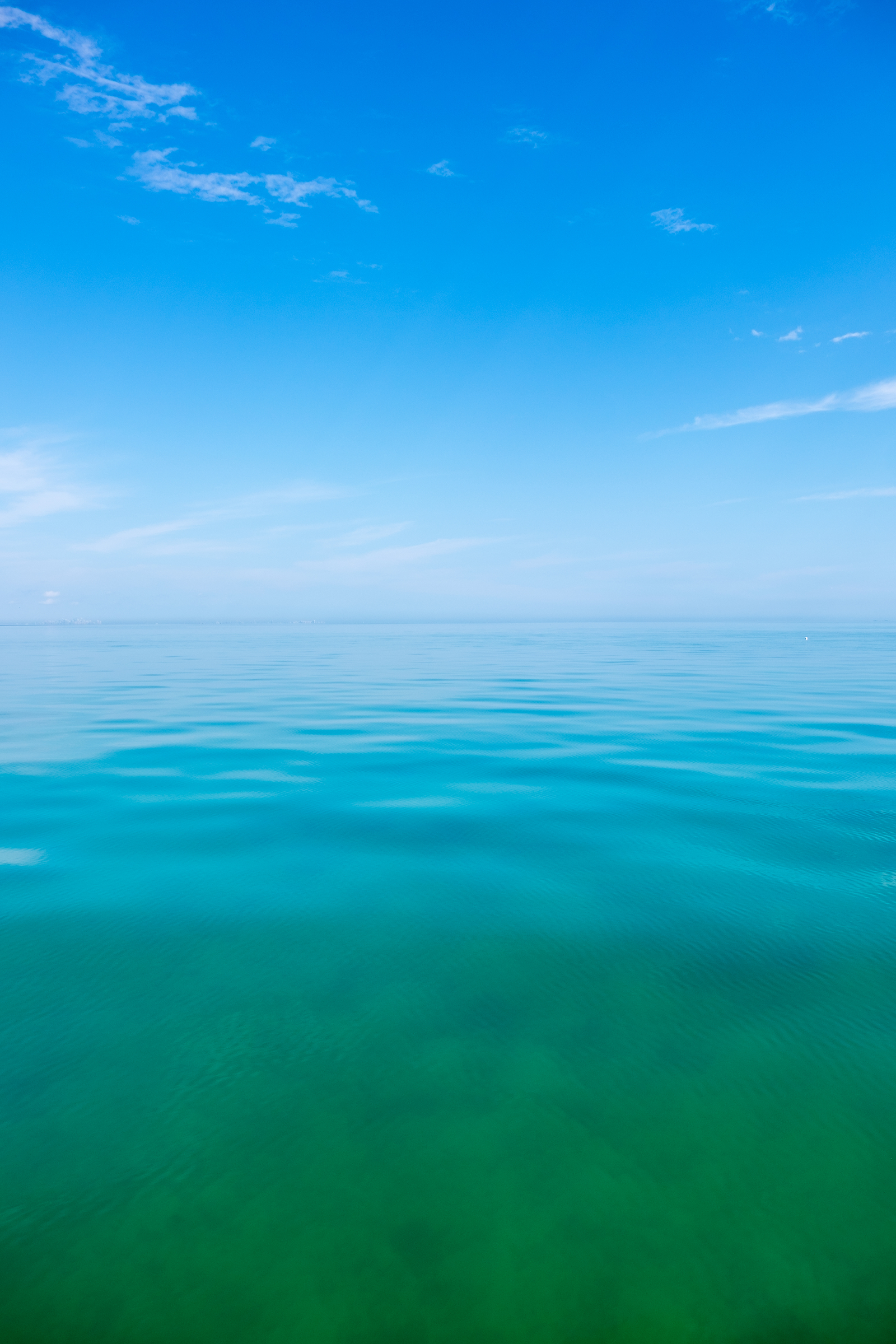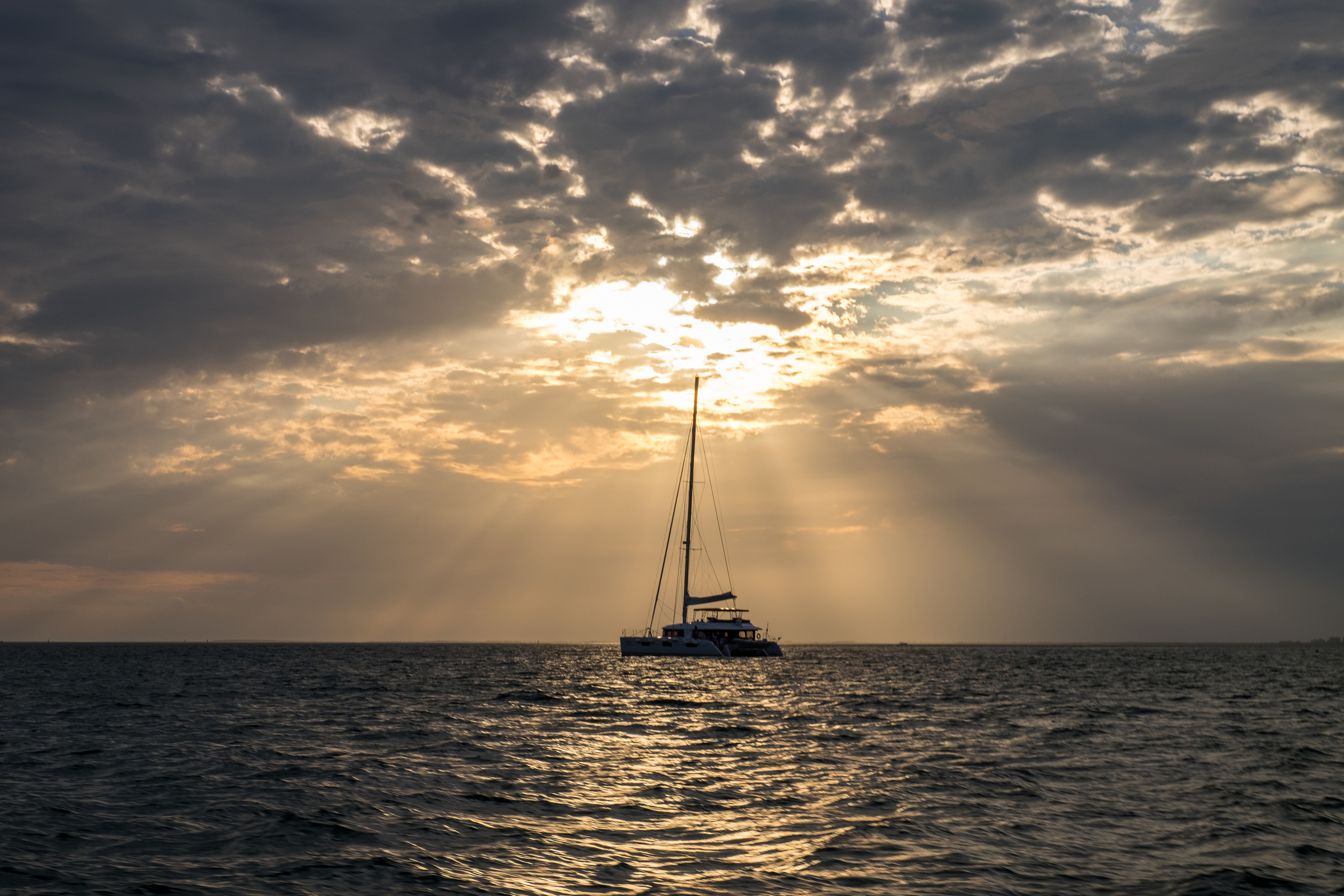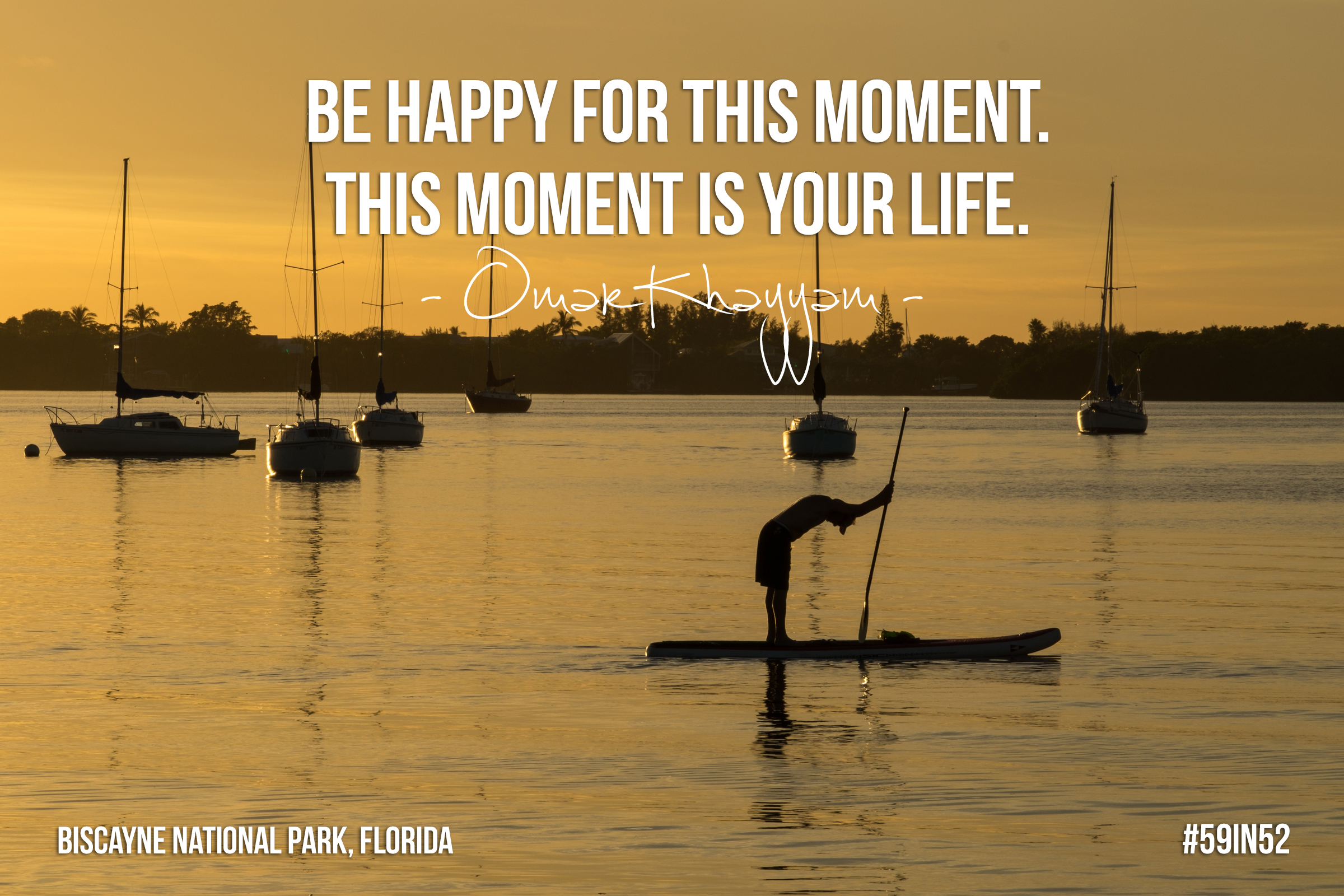Biscayne National Park, Florida, USA | Park 2/52
Volunteer for a Day, Biscayne National Park
The Harbor at Boca Chita Key, Biscayne National Park's best-known area. | Credit: Jonathan Irish
Living 95% under water, Biscayne National Park is certainly one of the most unique and unusual parks in the system. You don't enter through a gated entrance as you do at so many other parks, but by sea. If you are not paying attention, you might miss the moment when you first dip your toe into the protected waters.
Captain Paul, National Park Service volunteer at Biscayne NP. | Credit: Jonathan Irish
The best way to get the lay of the land at any of our National Parks is at the Visitor Centers (VCs) where park staff recommends their favorite areas to experience. At the Dante Fascell VC in Biscayne, you can get info on where to dive and snorkel, and where to push off by paddle from the shores of Convoy Point.
But the real heart of Biscayne lies in the Outer Keys, and to get out there, you need access to a boat—not having one, we needed to get creative. Enter Paul and Carolyn, National Park volunteers at Biscayne for more than 12 years, who let us hitch a ride to Boca Chita Key where they would open the iconic lighthouse for visitors to explore. They were true snowbirds, coming down from Massachusetts for 6 months each year, spending their retirement in the sun and contributing to the community through the Park Service. Paul, a boat captain for three decades, recanted stories to me while careening the choppy waters from the VC to Boca Chita. He schooled me of the legend of the African pirate, Black Caesar, who'd evaded capture for years in the Florida Keys during the 17th century by turning his mast sideways so as to not be spotted on the horizon. He talked about the function of the nuclear power plant that has lived inside the park boundaries since before the park was officially established, and the crocodile habitat that resided at its hip; and so interesting to me, he storied remnants of "chug" boats found in the waters that at one time carried refugees from Cuba to Florida... what a wealth of information driving us through the majestic waters!
View from the Boca Chita Lighthouse. | Credit: Stefanie Payne
There were other volunteers waiting at Boca Chita when we arrived, also there to share information with visitors, clean up trash, monitor wildlife, and perform other, cool, ranger-esque functions. And there stood the two of us—volunteers for a day— documenting the park through video and photography. We cleaned up trash too.
If volunteering isn't your thing, have no fear—this water lover's national park provides vast and diverse ways to explore it and the warm climate welcomes all throughout the year. Sailing, pontooning, yachting, parasailing, jet-skiing and every other kind of water sport is at play in the park- and adjacent waters; paddling, snorkeling, diving, and boating are favorites nearer to shore as they do not disturb the fragile seagrass and reef systems.
At Biscayne, I'd expected to learn everything about what was happening beneath the surface of the water—the marine biology and science of the living reefs—but what I found instead fascinated me more: the culture of park preservation occurring above the surface.
Volunteer opportunities are at play at nearly all of the U.S. National Parks. Learn more about how you can become part of the park system for a day or longer on the official site.
Quotable Images
Day Trip: Pontoon Ride Through Miami Harbor to Stiltstville
Historic Stiltsville in Biscayne National Park has an incredible story of pirating, bootlegging, survival at sea... classic old-time Miami! | Credit: Jonathan Irish
The last time you were in southeastern Florida, did you know that you were exploring either in, or near to, one of the National Parks System's most precious gems? Biscayne National Park is located in the waters that stretch from the Florida Keys up to South Beach—Miami's most flashy locale.
Captain Matt of Ocean Force Adventures explains the Port of Miami. | Credit: Jonathan Irish
South Beach is not exactly the kind of place you'd imagine to set out from on a National Park adventure, but it is exactly where to go to launch to one of the parks' most iconic, special places with the top operator in the area. The place: Stiltsville. The company: Ocean Force Adventures. Both were so incredibly special that we thought they'd earned a special spot on this page.
The collection of colorful and battered buildings at Stiltsville, a small community of houses built on Stilts as the name suggests, lives in the shallows on the northern end of Biscayne National Park.
The first house was built in the 1920s by a well-known fisherman named Crawfish Edie. His brilliance caught on and other houses popped up shortly thereafter, quickly turning the area into a Prohibition-era stopover for rum purchased in the Bahamas on its way to the United States. In the 1930s, a community of squatters took hold of the houses, and then commenced the heyday of shipwrecking, when pirates would dim the nearby Cape Florida Lighthouse causing ships full of booze to wreck on the shores... presenting a perfect opportunity for looting. The 1950s brought gambling, legal booze, money, private clubs, party huts—it was the American Dream, Miami-style. Eventually, Stiltsville became the South Beach of its day—the "anybody who is anybody" place to be seen.
Closeup of a house at Stilstville and the art of Space Invader. | Credit: Stefanie Payne
At one time, there were 27 houses. Today, only seven houses—all vacant—remain, the rest being demolished by fires and hurricanes over time. The houses at Stiltsville are owned by Biscayne National Park. Family of original deed owners have access to the houses on weekends, but are not allowed to make any major renovations other than basic upkeep to ensure historic value is maintained. For the rest of us, there are boat tours to take us there.
What made the experience aboard Ocean Force exceptional is the relatively small, 6-passenger high performance Zodiac; the captain's willingness to brave choppy waters while maintaining speed (I love a little adventure with my adventure), his knowledge of the area and its history, and the diversity of the locations visited while on the boat ride—we were among uber-mansions one minute, and spotting dolphins porpoising on vast protected waters the next. A guided excursion could take you to the most spectacular place on Earth, but it is the operator who really makes the memory. Feeling safe, having great photography ops, learning the legends and backstory, and finding hidden pockets to explore—these are the nuances of guiding that that set great companies apart.
Fact Box
172,924 acres | 95% of Biscayne National Park is underwater
Official name: Biscayne National Park
Established: June 28, 1980
Location: Southern Florida, United States
How the park got its name: Biscayne is said to be named after a shipwrecked Basque sailor, known as the "Biscaino" or "Viscayno", and as an allusion to the name of the surrounding Bay of Biscay.
Iconic site in the Park: Boca Chita Lighthouse. This 65-foot ornamental lighthouse is the most symbolic vision in all of Biscayne National Park. The observation deck provides island, sea, and bay views and glimpses of surrounding city skylines. It is opened periodically, usually on weekends, by National Parks staff and volunteers for day visits.
Accessible adventure: Harbor Cruise to Stiltsville. Explore the coastal Miami waterways by pontoon boat as you make your way to the pristine waters of Biscayne National Park with Ocean Force Adventures. The inspired and knowledgable staff will teach you about the iconic Port of Miami, Coast Guard operations (they are serious in Miami), while cruising you by the waterfront homes of the rich and famous... but the real star of the show is the historic area of Stilstville, where houses built in the 1920s sprout up from National Park waters in the middle of the sea.
Big adventure: Camping on Boca Chita Key, the park's most popular island. Find boat tie-ups in the harbor, an open waterside perfect for snorkeling, swimming, and sea combing, and grassy areas where you can set up camp and explore overgrown national parkland. These primitive camping sites are first-come-first-served. Bring bug spray.
Did you know?
All ‘Keys’ are ‘Islands’ but not all islands are keys. The difference between an island and a key is that a key is a biologically formed, living coral reef.
Biscayne National Park's Maritime Heritage Trail is the only underwater archaeological trail in the National Park System. The "Shipwreck Trail" includes six wrecks spanning a century of maritime history.
For over 30 years, Biscayne National Park has been providing 3-day, 2-night residential camping programs for school groups on one of the park's islands. All equipment and boat transportation are provided free of charge.
There are more than 500 species of fish; corals, manatees, and crocodiles; and butterflies and birds abounding above waters.
Learn more about Biscayne National Park on the FAQ page of the National Park Service (NPS) official site.
Biscayne National Park Map
Every Year at Biscayne: Family Fun Fest
Courtesy of NPS | Biscayne
Every year, Family Fun Fest comes to life on the second Sunday of every month from December through April at the Dante Fascell Visitor Center at the park headquarters. Each month, a different aspect of the park's diverse resources is highlighted during this free public program that is made available to visitors.
Family Fun Fest is made possible through funding provided by Park Visitor Donations and the Bobby Duryea Memorial Fund at the South Florida National Parks Trust, with additional support from the Biscayne Bay Aquatic Preserves, local businesses and organizations, and a host of dedicated volunteers.
During the Park Service centennial in 2016, Family Fun Fest will also have a birthday -- 16 years -- and this year the highlight Biscayne's connections to some of the 407 other national parks. (Don't forget to tag your favorite park experience on social media this year with #FindYourPark). Visit the Family Fun Fest fact page on the official website to learn about the remaining themes occurring this year.
A special thanks to National Geographic, Fujifilm, and Airstream for making this project possible.

































































